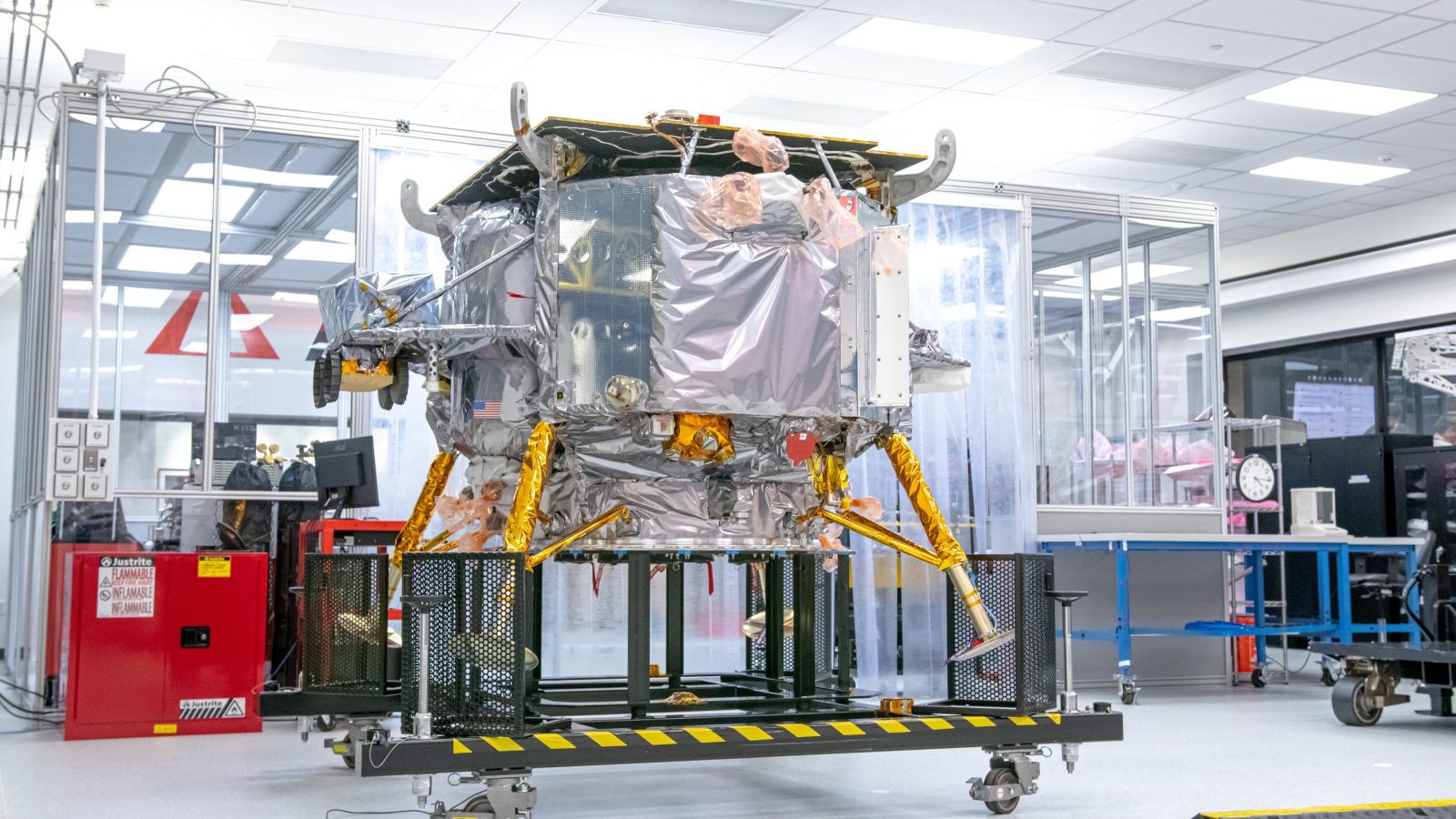
Early Friday morning, Astrobotic’s first lunar lander departed its offices in Pittsburgh for a drive down to Florida to be integrated onto the Atlas V for launch as soon as December. A flight the company has been waiting to do for years.
Astrobotic ships first NASA CLPS mission down to Florida
In a moment I’m sure company employees have been waiting a very long time to see, Astrobotic buttoned up its Peregrine lunar lander and sent it on its journey down to the Space Coast. With ULA announcing it is preparing to launch its first Vulcan rocket this Christmas season, this means the lander needs to prepare to be integrated on its rocket.
Astrobotic is headquartered in downtown Pittsburgh, almost directly north of its planned launch site in Florida. There the company builds its Peregrine landers and is developing a larger version of the lander called Griffin. Attached also to Astrobotic’s offices is the Moonshot Museum that shows off some of the company’s technology and has a window into the HQ’s cleanroom.
If all goes to plan on ULA’s side, Peregrine Mission One will be the first mission of NASA’s Commercial Lunar Payload Services (CLPS) program. Part of Artemis, CLPS’s mission is to provide low-cost and regular access to the lunar surface.
Along side Astrobotic, NASA has also selected Intuitive Machines, Draper, and Firefly to build and launch launders to the Moon’s surface in support of the Artemis Program. The idea being if you want to build a sustainable presence on the Moon, you need a thriving commercial market to bring lower prices. Cargo landings to lunar bases will be an important part of staying at the Moon long term so best start developing that ecosystem now.
On Peregrine Mission One there will be 21 different customers flying a variety of payloads. Two payloads are landers, one from the United States and the other from Mexico. Peregrine will host eight different science instruments, all of them are from the US except one from Germany. This is where NASA plays the biggest role in the CLPS program, selecting what science payloads get added.
The rest of the lander’s space will be taken up by “timecapsules.” Some of these payloads are like The Ark Foundation’s Lunar Library that has a backup of Wikipedia and datasets from the Internet Archive. Others come from other groups that wanted to put fun items on the Moon, like Bitcoin.
There’s also the DHL MoonBox which allowed anyone to purchase space to store whatever they wished. Most of this stuff is digital and will be store on hard drives and come from YouTubers like Mr. Beast and TJ Cooney (I Need More Space) and then Dogecoin who is sending its cryptocurrency literally to the Moon.
Join our Discord Server: Join the community with forums and chatrooms about space! Also, directly support us via a Server Subscription!
Vulcan is ready to fly, hopefully
This will be ULA’s first flight of its new Vulcan rocket, or its Cert-1 flight. After resolving the anomaly found on a test stand in Alabama on the second stage, ULA is hoping to fly no earlier than Christmas Eve.
Currently, ULA is assembling and qualifying the Centaur V second stage that will fly Peregrine to the Moon. This will take place in parallel during November and will end with the stage being delivered to Cape Canaveral Space Force Station for integration.
Vulcan’s first stage has already begun the integration at SLC-41 with the hoisting of the first stage booster into place. Then ULA will installed the two GEM 63XL solid rocket motors, the booster’s interstage, and then the Centaur V. Finally, ULA will complete a final wet dress rehearsal before placing Astrobotic’s lander on top, encased in its payload fairing.
All this, with hopefully no delay, before Christmas. If there are any delays, ULA would have to delay the flight until January.
FTC: We use income earning auto affiliate links. More.


Comments